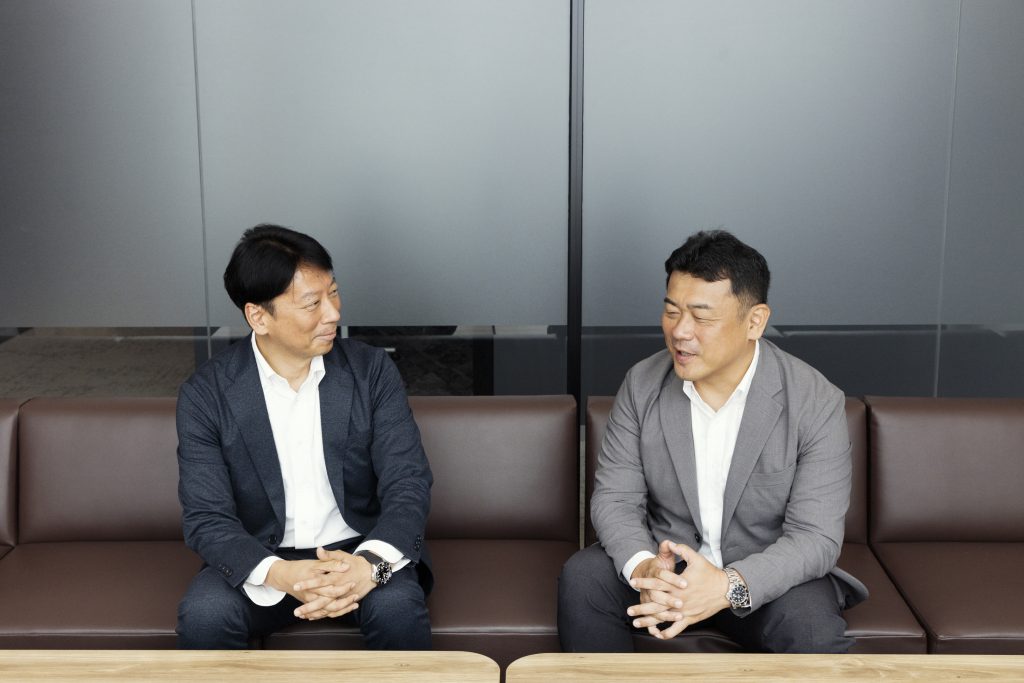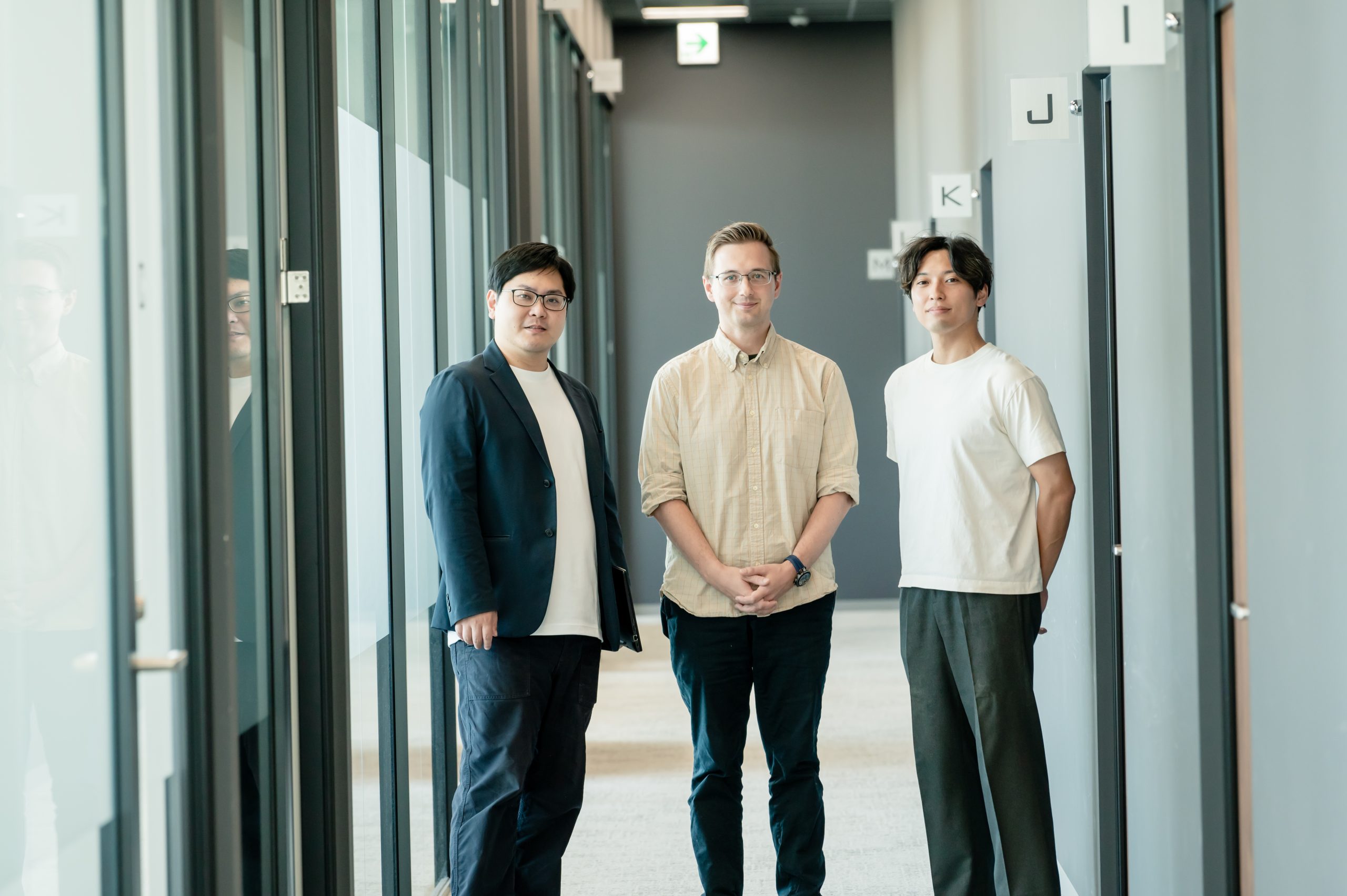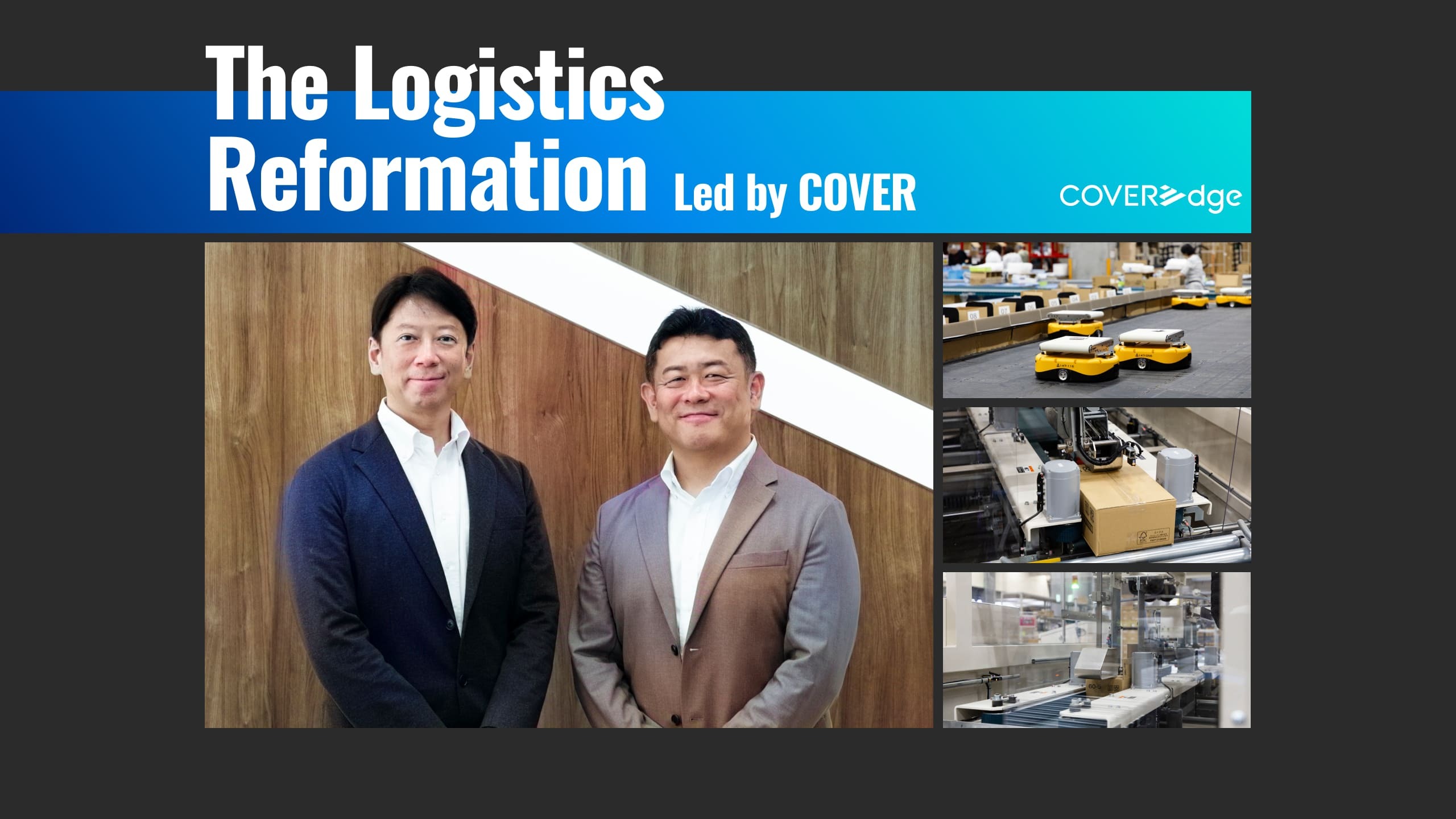
From acrylic stands to plush toys, we have an ever-expanding lineup of merchandise designed to make oshi life even more enjoyable. As hololive production and COVER Corporation continue to grow, so too has the volume and variety of merchandise we handle.
At the same time, in order to reliably deliver these items to our dedicated fans, it became clear that we needed to strengthen our logistics infrastructure. That’s why, in August 2024, we launched a full-scale logistics reform with the opening of a new logistics center, and we’re making a serious push to improve our logistics operations.
While overseeing product planning and commerce, Senior Vice President Maeda has been leading our logistic reform and to support this effort, he turned to someone with deep expertise in the field: Mr. Hiroki Yoshino, a true logistics professional. Mr. Yoshino previously led the logistics division at MonotaRO Co.,Ltd., a top player in B2B e-commerce for indirect materials and is now working with us as an advisor to implement transformative improvements. So, what changes are actually taking place behind the scenes?
In this feature, we sat down with Mr. Yoshino and Senior Vice President Maeda to hear more about the overall plans for improvement and their vision for the future.
Hiroki Yoshino
L2 Inc./CEO
Hiroki Yoshino has forged a career in the logistics field, working across logistics strategy, process and service design, and cost optimization and companies such as NIPPON SHUPPAN HANBAI INC., Rakuten Group, Inc., SIGMAXYZ Inc.
From 2014, he spent ten years as an Executive Officer in charge of logistics at MonotaRO Co.,Ltd. , where he led the development of a nationwide logistics center network, including the launch of several large-scale facilities. He also promoted automation within the company by introducing more than 1,300 AGVs (automated guided vehicles), while taking charge of end-to-end operations including demand forecasting, inventory management, and customer support.
After serving as Executive Vice President at GROUND Inc., he was appointed CEO of L2, Inc. in 2025.
Daisuke Maeda
COVER Corporation/Senior Vice President in charge of merchandising, e-commerce and logistics
Daisuke Maeda was involved in launching several internet businesses at Sumitomo Corporation. Thereafter, he served as president of Soukai Drug Malaysia and MonotaRO Indonesia consecutively. After returning to Japan, he joined RAKSUL and was appointed Executive Officer for the sales division for printing and customer attraction. In 2024, he became a Senior Vice President at COVER Corporation.
Taking Logistics to the Next Level with a Logistics Professional
―To start with, what made you come on board to support COVER’s logistics reform?
I had worked with Mr. Yoshino in my previous role, so I reached out to him for some advice on our logistics challenges – and that’s how the conversation started.
I joined COVER in July 2024, (see related article), but even before I officially came on board, I’d already heard about some of the challenges in our logistics operations. With both the production side and the company as a whole growing so quickly, our logistics operations hadn’t quite caught up, which is why I reached out to Mr. Yoshino and asked him to come on as an advisor to help guide us through our full-scale logistics reform.
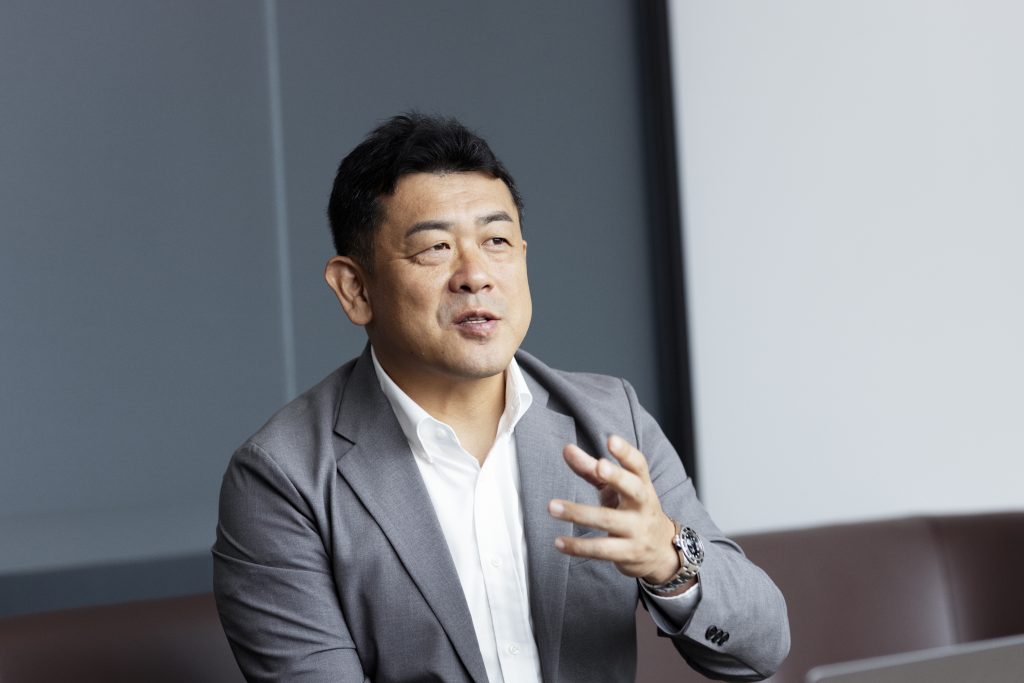
―Mr. Yoshino, what were your initial thoughts about getting involved with COVER?
At first, I didn’t know much about COVER or the VTuber industry, so I started by doing some of my own research. That’s when I realized this was an exciting new form of entertainment with global potential and the more I learned, the more it sparked my curiosity, and found myself becoming genuinely excited to be a part of it.
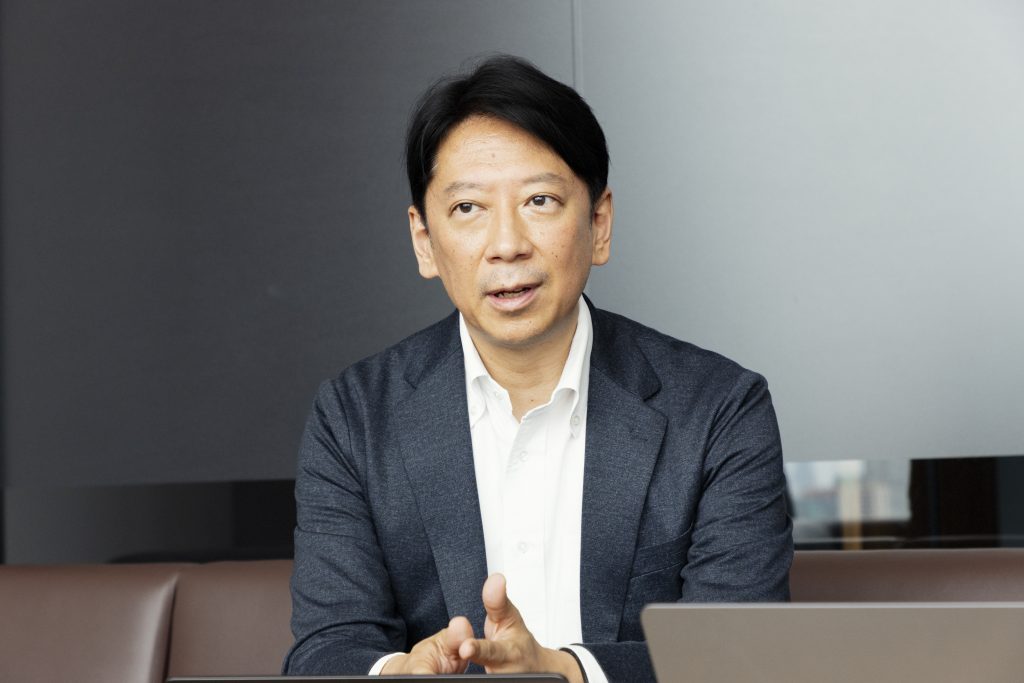
―You both have extensive experience in e-commerce and logistics. What was your honest impression when you first looked at our logistics setup?
I felt that it was somewhat simplistic, but also challenging as there is a long supply chain extending from production all the way to the customer.
We handle a variety of products – many with long lead times – and logistics volumes can spike suddenly depending on talent anniversaries or special events. This kind of fluctuation* adds an extra layer of complexity. That said, I saw plenty of room for improvement.
*Fluctuations in logistics volume are due to a range of factors, including seasonal demand, social trends, and special events.
There are three key management perspectives I believe are essential when thinking about logistics.
The first is the scale and location of logistics centers; the second being the use of IT – both in systems and logistics infrastructure; and third is the organization itself.
Looking at COVER as a whole, I felt that because the company is still in a phase of rapid growth, there’s room for improvement across all three.
Looking Ahead to Optimizing Global Logistics: Taking a Mid-Term Approach to Reform
―Let’s dive deeper into the details of this reform. As the merchandising side of the business continues to grow, how are you approaching logistical improvements?
To start, we look at logistics through a four-quadrant framework.
There’s logistics for individual fans and also corporate logistics (B2B), such as retail stores and pop-up events. Each of these is further divided into domestic and international.
Right now, our B2B logistics for overseas markets is still relatively small, but when it comes to international individual fan orders, we’re already seeing a steady growth in volume.
Currently, those cross-border shipments are handled by the same domestic warehouses as the ones we use for Japan. But because those warehouses are spread out across the country and because we’re working with different delivery partners within Japan as opposed to overseas, it has created some logistical inefficiencies we need to address.
―I see. So am I right in saying that this is what has led to consolidating everything into this new logistics center?
Exactly. As the first step in our improvement efforts, we consolidated our warehouses (see related article) to boost overall efficiency, and from there, we plan to review our delivery partnerships and continue making further improvements.
―So there appears to be multiple phases: could you tell us more about each stage of the plan?
We’re approaching this project in three phases, with the first phase being the consolidation of our warehouses that I just mentioned. The second phase, which we’re right in the middle of, focuses on enhancing the service level of our domestic delivery operations, and the third phase will be strengthening our international supply chain. We expect the full process to take about two years.
We just finished consolidating our warehouses which started about a year ago in August last year and now, over the course of the next year, we’ll be focusing on improving delivery operations and overall productivity, while also beginning to work on optimizing our international logistics.
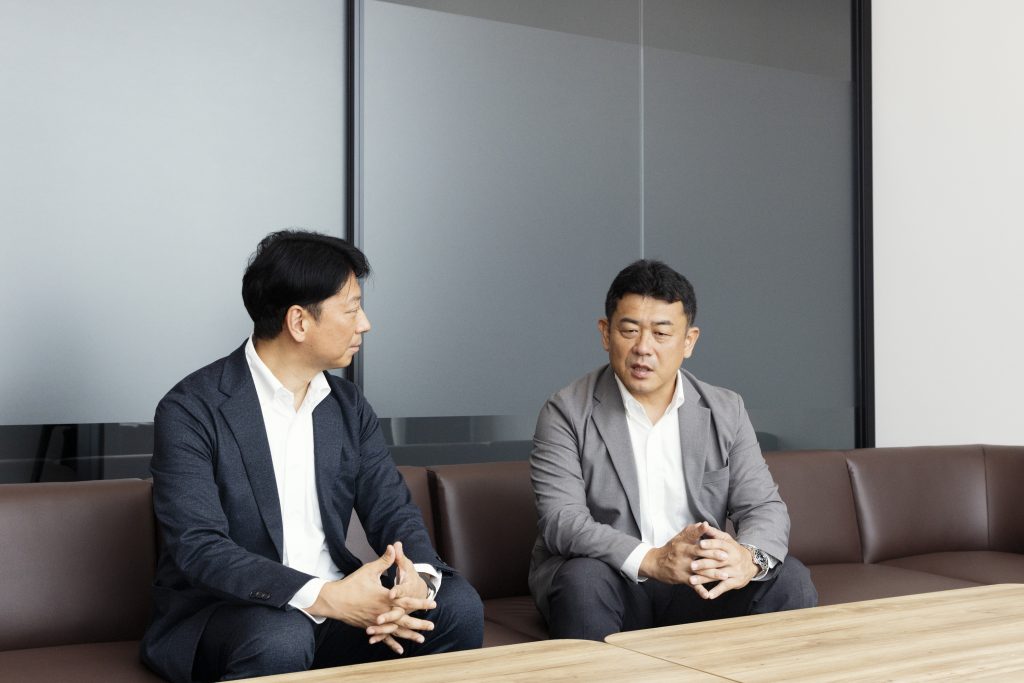
We also restructured our logistics partnerships as part of consolidating the warehouses.
This has involved important decisions that could influence the future of COVER, so we made sure to commit to a competitive bidding process and made a fair judgement based on factors like long-term potential, competitiveness and other key factors.
As we look toward future growth, it’s vital to work with partners we can truly trust, and grow with, over the long term.
I was fortunate enough to be part of the bidding process this time around, and am honored to be entrusted with such an important role.
―Now that your logistics partners are in place, it sounds like you’re making progress on your future logistics framework.
Improving logistics alone isn’t enough for our loyal fans. What really matters is QCD – quality, cost, and delivery.It’s about delivering great products quickly and affordably, without compromising on quality.
That’s why alongside building our logistics framework, we’re also working on strengthening our internal structures.
We’ve launched a new SCM (Supply Chain Management) division, and we’re bringing in professionals experienced in areas like global sourcing, cost control, payment operations, and quality management.
Upscaling through Warehouse Consolidation: Powering Better Fan Experiences
―Your new logistics center officially began standalone operations in June, but what was the main reason behind consolidating your warehouses?
The main reason we consolidated our warehouses into a new logistics center was to take advantage of the scale that comes with centralizing our operations. By bringing everything under one roof, we can better control costs, ensure more consistent service levels, and standardize our overall logistics management.
While the volume of orders is still small, having multiple warehouses isn’t a major issue, but as business scales, it starts to impact operational inefficiency. Having a number of warehouses in different locations can drive up costs, increase the chance of stockouts, and can make it harder to standardize workflows and control service levels.
Of course, as order volumes grow and we continue to have more and more customers from all parts of the world, there may come a time when we need to increase the number of logistics hubs, but for now, our focus is on improving efficiency and accuracy by consolidating operations into a single center.
―As you mentioned earlier, logistics are closely linked with talent activities, which means merchandise volume can fluctuate quite a bit. How do you view the challenges that come with that?
That’s definitely one of the trickiest parts – deciding whether to base your logistics capacity on peak periods, like spikes around talent anniversaries, etc., or on quieter times of the year. If you prepare solely for those peak periods, you may end up with excess merchandise during regular periods, but if you plan for the downtimes, you’ll be overwhelmed when demand surges. Finding the right balance through data analyses will be a key challenge moving forward.

When you take into account the full impact of demand fluctuations, it becomes really tough to keep things balanced, but since many of our products are made to order, there’s an opportunity to create more even operations throughout the year by using lead times before shipping to prepare accordingly. The challenge we face, however, is that leveling out operations can sometimes lead to longer delivery times, so to avoid this, we believe it’s crucial to automate certain processes and increase throughput (processing volume per unit of time).
―What kinds of advantages come from consolidating logistics hubs?
Once products arrive at a logistics center, they go through the same series of steps before being handed off to a delivery partner:
Inspection → Shelving → Storage → Picking → Sorting (for orders with multiple items) → Packing
This flow doesn’t really change, no matter the type of products nor the size of the facility. That’s why consolidation creates scaling advantages. By centralizing operations, we can invest in better equipment and automation, making each step more efficient and it also helps shorten lead times and improve overall quality.
As we improve lead times within the warehouse, we expect overall delivery timelines to shorten, which is a big benefit for our fans. Until now, having multiple warehouses meant higher shipping costs and added overhead expenses from managing each location separately, so cutting back on some of these costs by making these adjustments gives us more opportunities to give back to our fans.
There have also been positive developments from a corporate point of view as well. For example, we’ve been able to reduce the number of truck deliveries, which contributes to lower CO2 emissions, and there are now more possibilities for us to further increase our sustainability, through reducing plastic use, introducing returnable containers, and switching to lighter packaging materials.
Automation and Robotics in the Logistics Center: Upgrading Our Management Systems
― Could you expand a little on the importance of logistical information technology from a management perspective that Mr. Yoshino mentioned earlier.
From my experience, there’s a point where automation and system upgrades become essential for sustaining future growth: when the volume of daily shipments exceeds roughly 3,000 to 4,000.
If we break down our current annual volume, we’re already averaging close to 4,000 shipments per day, so this is indeed the right time to level up our logistics infrastructure.
That said, deciding how far to go with automation is important. We can invest heavily in state-of-the-art systems, but it’s hard to know when actual demand or on-site operations will catch up, which is why our fundamental approach is to upgrade the level of automation in line with each growth phase, while keeping a close eye on depreciation.
―Could you tell us more about what technologies and systems are being introduced at the new logistics center?
We’ve started automating key operations inside the logistics center, particularly in areas like sorting and packing, by introducing robotics to streamline workflows.
We’ve also upgraded both our order management systems (OMS) and warehouse management systems (WMS) to support more advanced order management. By connecting these systems to our core platform, we’re aiming to improve lead times and inventory control, making it easier to manage stock levels more efficiently.
We are all united in our mission to increase work efficiency, improve product quality and shorten lead times inside the warehouse every day.
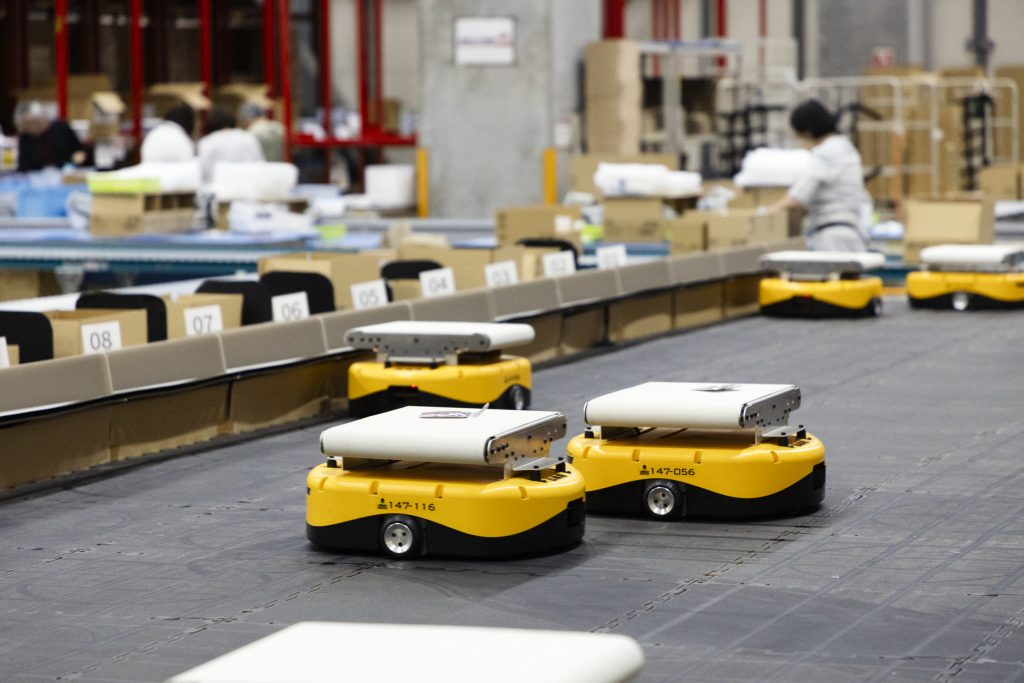
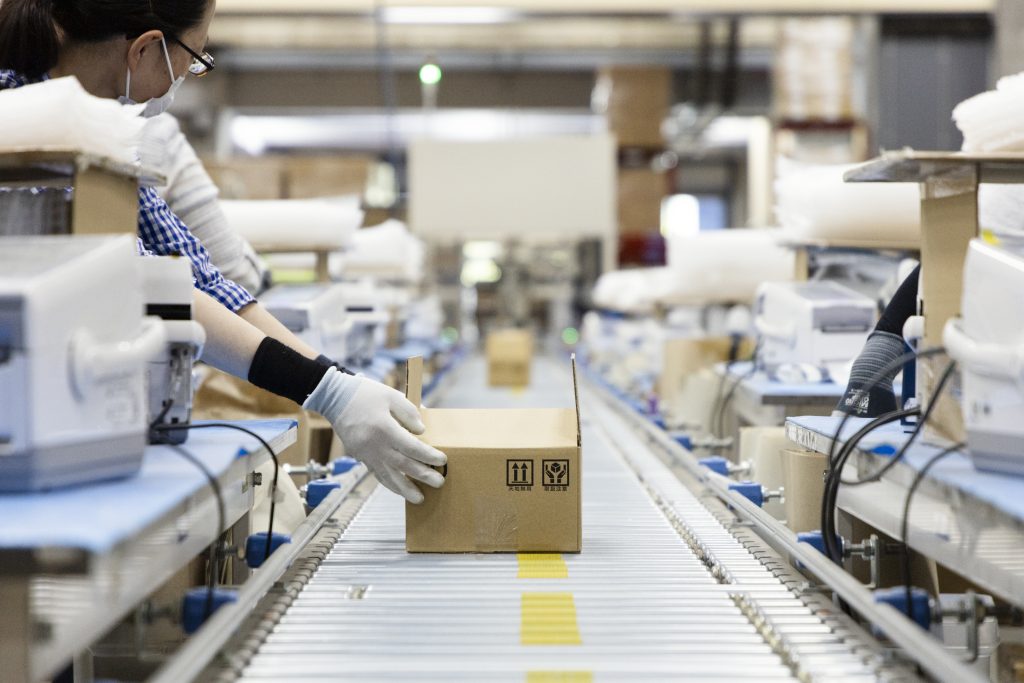
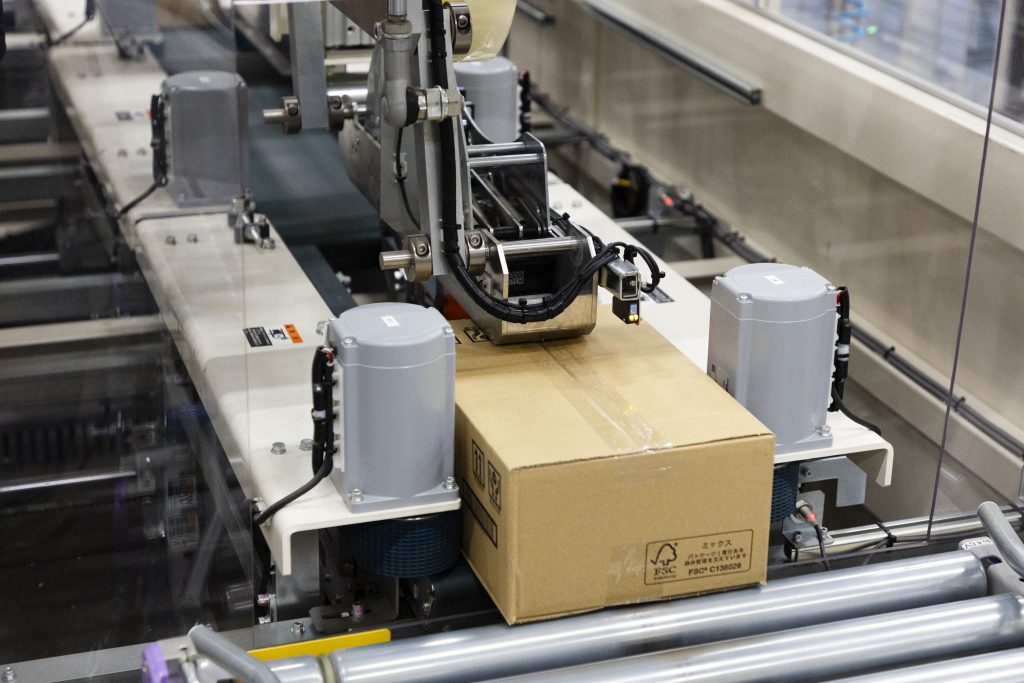
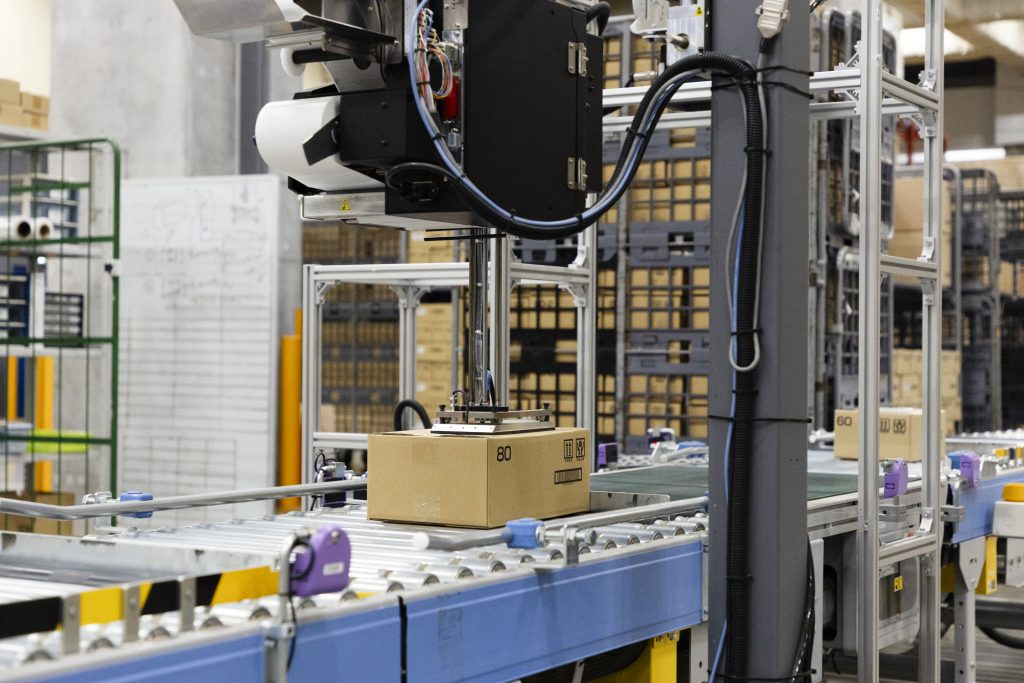
―How are you approaching logistics optimization?
We’ve created a system that allows us to work even closer with our logistics partners through all phases from the initial planning stages to on-the-ground logistical operations. One key focus is making sure our operations are visible and data-driven, because by sharing real-time data, we can create a further seamless connection between our planning team and those who carry such plans out.
Exactly. It’s not uncommon for companies to fully outsource logistics and end up with little visibility into what’s actually happening on the ground. COVER is taking a very active role in sharing information with both internal and external partners. By visualizing key data, like customer orders, inventory, and real-time progress on the floor, and setting clear KPIs, both sides can remain on the same page and work together to make any necessary improvements. This is where the idea of having long-term partners we can grow with, which I mentioned earlier, really comes into play because operations can be optimized with these kinds of collaboration. I’d say we’re just now entering a cycle of continuous improvement.
Providing Talent Experiences in 3D: Logistics as a Pillar of Growth
―What kind of feedback have you received from fans regarding the logistical challenges COVER faces?
We receive all kinds of feedback from fans, but the comments we get most frequently is that delivery times are too slow, or that they were disappointed that their order didn’t arrive by particular dates such as talent anniversaries. We also understand that overseas fans are concerned about shipping fees and are fully aware that these operational issues require our utmost attention, but this project provides a solid foundation for us to address such issues one at a time.
―What value do logistical improvements bring to COVER?
Roughly half of COVER’s revenue comes from merchandise and for talents who exist in the virtual space, merchandise plays a crucial role in delivering real-world, three-dimensional value to the VTuber experience. In that sense, merchandise isn’t just a product – it’s a vital connection between our talents and their fans and is one of the most important ways we can deliver products and services with true value, and strengthening logistics is essential to sustaining such connections. Logistics is at the foundation of any successful business striving for continued growth and its optimization is paramount in getting important merchandise to fans, so improving these processes will hopefully lead to a better overall fan experience.
Many people these days expect their online order to arrive at their door the following day, but without a fully-fledged logistics infrastructure, incorrect shipments and lengthy delivery times are not uncommon. Hence why we’re committed to making these operational improvements: reducing lead times and ensuring every delivery is accurate.
Given all of this, I believe improvements to COVER’s logistics can make a significant contribution to raising the overall service level of our business. We can see improvements across the board in quality, cost and delivery (QCD) through the consolidation of our warehouse that aims to improve both accuracy and efficiency, but we will continue to refine operations and steadily develop in order to meet the expectations of many more of our loyal fans.

―What are some of the unique challenges you have faced when trying to implement logistical improvements at COVER?
One of the unique challenges we face is managing orders that include both pre-order and in-stock items. To deliver them together, we need to reserve inventory in advance and then coordinate the packing process to align with pre-order shipment schedules. It’s a complex workflow, and figuring out how to streamline it has been a key focus: definitely one of the more distinctive aspects of logistics here at COVER.
Looking ahead to the future, one of COVER’s key challenges will be designing and optimizing a global supply chain. Currently, international fans purchase merchandise through cross-border e-commerce channels, but in the future, we may need to establish overseas production hubs and strategically redesign the entire supply chain.
If we can build a global supply chain framework, we’ll be able to significantly shorten delivery times and ultimately improve satisfaction levels among our international fans, making this logistics improvement project an important first step toward achieving our global vision.
―Thank you. Finally, could you share your vision for the future?
As I mentioned earlier about the global supply chain, we’re aiming to manufacture and distribute merchandise worldwide going forward: to bring joy to fans around the world, optimizing our supply chain is essential. That’s why we’ll continue to refine our operations through ongoing system upgrades and automation initiatives.
On the other hand, when it comes to domestic logistics, building a system aligned with ESG (environmental, social, and governance – a set of criteria used to evaluate a company’s sustainability and social responsibility) principles is becoming increasingly important, including reducing the amount of packaging materials used, simplifying and minimizing packaging, and improving energy efficiency through warehouse consolidation. Our goal is to create a logistics operation that’s thoughtful to, not just our fans, but the planet as well.
When we think about the future of logistics, one major issue that can’t be ignored is the growing shortage of labor. And it’s not just limited to logistics, it’s a challenge that many industries are struggling with today. On the flip side, we believe what is most essential here at COVER is building efficient operations and with the rapid advancements in logistics technology, such as automation equipment and increasingly sophisticated software, we can combine IT and system-based solutions to achieve this goal.
Implementing new technologies in logistics isn’t something that can be done in a day. We’re working closely alongside our business teams to design forward-looking systems.
